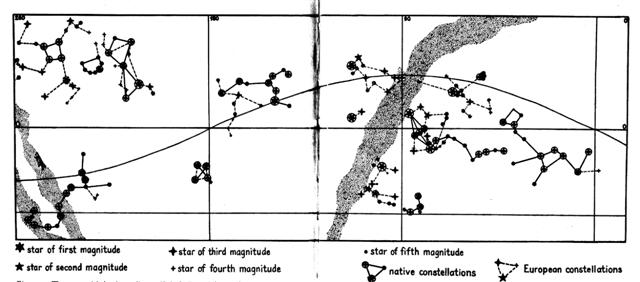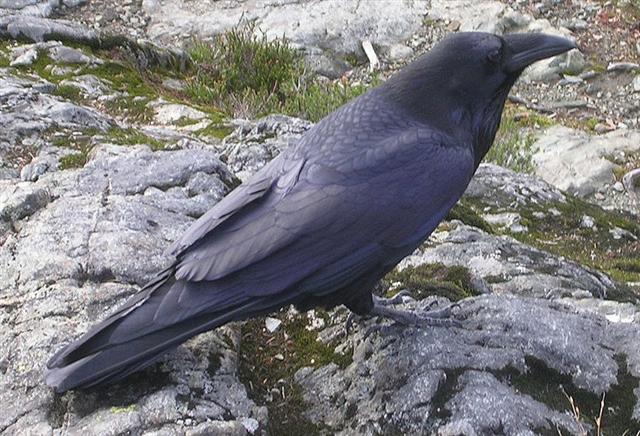9. The hot rays of the morning (spring) sun made all water puddles on the ground evaporate. Later these waters had to be returned in order to keep the balance.
Drinking vessels were not used by uncivilized people, instead their method was to cup the hand and scoop up the water to take it directly into the mouth. This explains the gesture with open hand oriented towards the mouth. ... The life-force of the earth is water. God moulded the earth with water. Blood too he made out of water. Even in a stone there is this force, for there is moisture in everything. But if Nummo is water, it also produces copper. When the sky is overcast, the sun's rays may be seen materializing on the misty horizon. These rays, excreted by the spirits, are of copper and are light. They are water too, because they uphold the earth's moisture as it rises. The Pair excrete light, because they are also light ... 'The sun's rays,' he went on, 'are fire and the Nummo's excrement. It is the rays which give the sun its strength. It is the Nummo who gives life to this star, for the sun is in some sort a star.' It was difficult to get him to explain what he meant by this obscure statement. The Nazarene made more than one fruitless effort to understand this part of the cosmogony; he could not discover any chink or crack through which to apprehend its meaning. He was moreover confronted with identifications which no European, that is, no average rational European, could admit. He felt himself humiliated, though not disagreeably so, at finding that his informant regarded fire and water as complementary, and not as opposites. The rays of light and heat draw the water up, and also cause it to descend again in the form of rain. That is all to the good. The movement created by this coming and going is a good thing. By means of the rays the Nummo draws out, and gives back the life-force. This movement indeed makes life ...
The fresh water cycle could be visualized as someone high up who first drank up all the waters and then had to urinate.
... The Pythagoreans make Phaeton fall into Eridanus, burning part of its water, and glowing still at the time when the Argonauts passed by. Ovid stated that since the fall the Nile hides its sources. Rigveda 9.73.3 says that the Great Varuna has hidden the ocean. The Mahabharata tells in its own style why the 'heavenly Ganga' had to be brought down. At the end of the Golden Age (Krita Yuga) a class of Asura who had fought against the 'gods' hid themselves in the ocean where the gods could not reach them, and planned to overthrow the government. So the gods implored Agastya (Canopus, alpha Carinae = Eridu) for help. The great Rishi did as he was bidden, drank up the water of the ocean, and thus laid bare the enemies, who were then slain by the gods. But now, there was no ocean anymore! Implored by the gods to fill the sea again, the Holy One replied: 'That water in sooth hath been digested by me. Some other expedient, therefore, must be thought of by you, if ye desire to make endeavour to fill the ocean ...
When in rongorongo times the Sun reached June 20 - which I have understood to be the first day of the solstice - it could be stated how the stars which in this day rose heliacally (at the same time as the Sun) were the same as those which had risen heliacally in APRIL 17 at the time of the Bull. June 20 corresponded to APRIL 17 (107 = 171 - 64). With Canopus (α in Argo Navis) rising with the Sun in June 24 (St John's Day) - at the opposite side of the sky and the year compared to Christmans Eve (December 24) - we can imagine the central figure with a fluid arm at left could have been intended to illustrate how the waters of winter were in the past. ... The seventh tree is the oak, the tree of Zeus, Juppiter, Hercules, The Dagda (the chief of the elder Irish gods), Thor, and all the other Thundergods, Jehovah in so far as he was 'El', and Allah. The royalty of the oak-tree needs no enlarging upon: most people are familiar with the argument of Sir James Frazer's Golden Bough, which concerns the human sacrifice of the oak-king of Nemi on Midsummer Day. The fuel of the midsummer fires is always oak, the fire of Vesta at Rome was fed with oak, and the need-fire is always kindled in an oak-log. When Gwion writes in the Câd Goddeu, 'Stout Guardian of the door, His name in every tongue', he is saying that doors are customarily made of oak as the strongest and toughest wood and that 'Duir', the Beth-Luis-Nion name for 'Oak', means 'door' in many European languages including Old Goidelic dorus, Latin foris, Greek thura, and German tür, all derived from the Sanskrit Dwr, and that Daleth, the Hebrew letter D, means 'Door' - the 'l' being originally an 'r'. Midsummer is the flowering season of the oak, which is the tree of endurance and triumph, and like the ash is said to 'court the lightning flash'. Its roots are believed to extend as deep underground as its branches rise in the air - Virgil mentions this - which makes it emblematic of a god whose law runs both in Heaven and in the Underworld ... The month, which takes its name from Juppiter the oak-god, begins on June 10th and ends of July 7th. Midway comes St. John's Day, June 24th, the day on which the oak-king was sacrificially burned alive. The Celtic year was divided into two halves with the second half beginning in July, apparently after a seven-day wake, or funeral feast, in the oak-king's honour ...
472 (= 8 * 59) - 107 (APRIL 17) = 365. The text says the northern summer solstice began 4 days before heliacal Canopus - which corresponded to 31 nights after 0h at the time of the Bull (as counted from Hyadum II). 171 (June 20) - 64 = 107 (APRIL 17). The Pope Gregory XIII had put °June 16 at heliacal Canopus, i.e. 11 + 171 = 182 (= 364 / 2 = 7 * 26 = 13 * 14) days after the winter solstice. At the time of Julius Caesar, when he launched the Julian calendar (in 45 B.C.), the precession had moved the stars 64 - 27 = 37 days ahead compared to the time of the Bull. For the dates in Roman times I have used yet another kind of notation:
'May 1 (121 = 11 * 11) and 12 * 12 = 144 (°May 24) were both at heliacal Aldebaran. This was not arbitrary, because in a Cosmos everything had to be in perfect order. In order for the whole to be beautiful every item had to be in its proper place compared to the rest. Everything should reflect everything else, everything should imply the whole - it should be a hologram, an 'implex'. Otherwise it would be insignificant, not noteworthy, ugly and not to be remembered. ... Fanciful, assuredly, but neither the Milky Way nor the terrestrial Ganges offered any basis for the imagery of a river flowing to the four quarters of the earth 'for the purification of the three worlds'. One cannot get away from the 'implex' and it is now necessary to consider the tale of a new skeleton map, alias skambha: the equinoctial colure had shifted to a position where it ran through stars of Auriga and through Rigel. Skambha, as we have said, was the World Tree consisting mostly of celestial coordinates, a kind of wildly imaginative armillary sphere. It all had to shift when one coordinate shifted ...
10 * 10 + 11 * 11 + 12 * 12 = 365 = 13 * 13 + 14 * 14 was the extension of 3 * 3 + 4 * 4 = 25 = 5 * 5. ... There was no water in the village. The lakes and rivers were dry. Raven and Crow, two young girls who were having their first menstrual courses, were told to go and draw water from the ocean. Finding the journey too long, Raven decided just to urinate into her basket-bucket. She decieved no one and was severly scolded. Crow returned much later but with drinking water. As a punishment, Raven was condemned never to find water in the summer; only in winter would she find something to drink. For that reason the Raven never drinks during the hot months; she speaks with a raucous voice because of her dry throat ...
|










